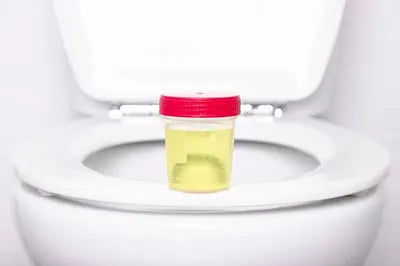There was a time when you hardly thought about your bladder; you went about your day without a second thought. But now, maybe you find yourself scanning for restrooms when you step out, or waking up at night more often than you’d like. These little changes can feel unsettling, even embarrassing.
The truth is that you are not alone. Many people experience bladder issues like urgency, leaks, or needing to go frequently, but few talk about it openly. It might feel like you're overanalysing things, but understanding your bladder capacity doesn't mean something's wrong. It's just a smart way to take better care of your body. Your bladder isn't letting you down; it's asking you to pay attention.
Anatomy and Function of the Bladder
Infographic Recommendation
Quick Facts About Your Bladder
-
Location: Low in your belly, stores urine from kidneys.
-
Function: Holds urine until it’s time to release.
-
Normal Capacity: 400–600 ml (about 2 cups).
- Average Urination Frequency: 6–8 times/day.
(Visual: Simple illustration of bladder in the body, with labeled capacity.)
Your bladder sits low in your belly, quietly doing its job every single day. It stores urine until it’s the right time to release it. The kidneys filter waste, pass it along to the bladder, and once it fills up enough, your body sends you that signal to go.
For years, this cycle may have worked so smoothly that you didn’t think twice about it. But with age, health conditions, or even lifestyle changes, the bladder can start behaving differently. Suddenly, the signals feel stronger, or the trips to the bathroom feel more frequent. This doesn’t mean your body is “failing”, it simply means your bladder needs a bit of extra care and understanding.
How Much Pee Can a Bladder Hold?
For most adults, the normal bladder capacity is between 400 and 600 millilitres, roughly two cups. That’s enough to hold urine for about three to four hours comfortably.
But “normal” is never the same for everyone. For example, the average bladder capacity female may be slightly smaller than that of men. And when it comes to male bladder capacity by age, changes are natural. A younger man may go hours without feeling the urge, while someone older might notice the bladder sending signals more often.
What matters isn’t comparing yourself to others, it’s noticing what feels different for you, and recognising whether those changes are interfering with your comfort or daily life.
Factors Affecting Bladder Capacity
So why do some people seem to “hold it in” with ease, while others feel the urge more often? A few reasons:
-
Age
As you grow older, bladder muscles can weaken, and the ability to store urine decreases. This is especially true when examining male bladder capacity by age, it naturally changes over time.
-
Gender
Anatomy plays a role. The average bladder capacity female may differ slightly from men, simply because of biological differences.
-
Hydration habits
Drinking a lot of fluids at once, or consuming caffeine and alcohol, can make you feel the urge more often.
-
Health conditions
Urinary tract infections, diabetes, or prostate issues can affect bladder behaviour.
-
Pregnancy and childbirth
These can temporarily weaken pelvic muscles, which may change how the bladder feels and functions.
These factors don’t mean your bladder is not functioning well. They simply explain why your experience may differ from someone else’s, and why it may change across your lifetime.
Also Read: Overactive Bladder (OAB) - A Comprehensive Guide
When Bladder Capacity Becomes a Concern
Everyone has days when they need to use the bathroom more often, such as after consuming a lot of tea, coffee, or water. But if you notice certain patterns, it’s worth paying attention:
-
Waking up several times a night to urinate
-
Feeling sudden, urgent urges that are hard to control
-
Passing very little urine despite frequent trips
-
Ongoing leakage or dribbling
-
Discomfort, burning, or pain when urinating
Noticing these signs? Don’t panic. They’re just a signal to check in with your doctor. With the right care, bladder issues are often manageable and in many cases, treatable.
Many people experience disturbed sleep because their bladder wakes them up during the night. For extra comfort and protection, using products like Friends Overnight Diaper Pants can help you rest more peacefully while managing symptoms.
Conclusion
Your bladder is a small organ, but it has a big impact on your daily life. If you're curious about the average bladder capacity for women or how male bladder capacity by age changes, the most important thing to remember is that your body is unique and your bladder's needs will alter over time.
Instead of ignoring the signals or feeling ashamed, permit yourself to listen. When you do, you’re not just caring for your bladder, you’re caring for your comfort, confidence, and peace of mind.
You don’t need to face these changes in silence. With awareness, gentle adjustments, and timely medical care when needed, you can continue to live fully, without letting your bladder control your life.
Product Recommendations
FAQs
1. What is the normal bladder capacity in adults?
Most adults can hold about two cups, or 400–600 ml, of urine without any problems. But here's the thing: "normal" is different for everyone. Some people feel full faster than others. How it makes you feel is what's important. It's not a flaw if you feel the need to go to the bathroom a lot or feel uncomfortable. It's your body telling you to pay attention.
2. How many times should a healthy person urinate in a day?
Typically, going six to eight times a day is considered usual. But remember, it depends on what you drink, what you eat, and even your activity. Some days you may go more, some days less, and that’s okay. The key is whether it feels manageable or if it’s starting to interfere with your day.
3. Can bladder size vary between individuals?
Absolutely. Just like your height, shoe size, or even appetite, bladder capacity is personal. Age, gender, lifestyle, and health all play a part. So try not to compare yourself to others, what’s normal is what feels right for you.
4. Can bladder training increase bladder capacity?
Yes. With gentle guidance, bladder training can help. It’s about gradually learning to wait a little longer before going, which can give your bladder more room over time. Patience is key, small progress is still progress, and it’s all about listening to your body kindly.
5. How can people maintain good bladder health daily?
Simple habits go a long way: stay hydrated, cut down on too much caffeine or alcohol, maintain a healthy weight, and gently strengthen your pelvic floor muscles. Most importantly, don’t ignore changes. If something feels off, checking in early can save a lot of discomfort later.





















